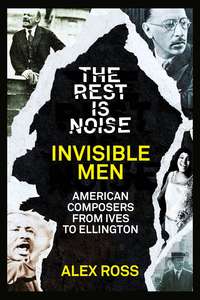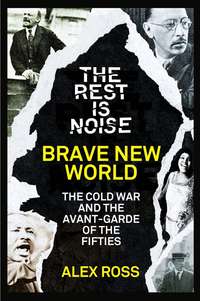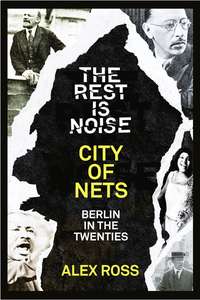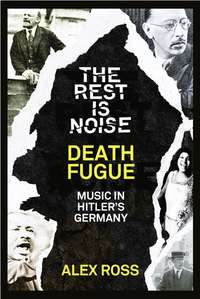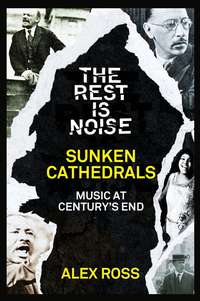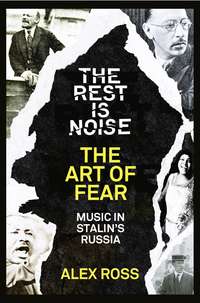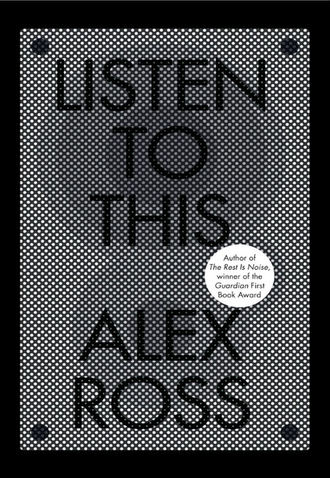
Полная версия
Listen to This
The thing about these cerebral punk rockers is that they were easily the most interesting people I’d ever met. Between painstakingly researched tributes to Mission of Burma and the Butthole Surfers, they composed undergraduate theses on fourth-century Roman fortifications and the liberal thought of Lionel Trilling. I began hanging around in the studio after my show was over, suppressing an instinctive fear of their sticker-covered leather jackets and multicolored hair. I informed them, as Mr. Barnes would have done, that the atonal music of Arnold Schoenberg had prefigured all this. And I began listening to new things. The first two rock records I bought were Pere Ubu’s Terminal Tower compilation and Sonic Youth’s Daydream Nation. I crept from underground rock to alternative rock and finally to the full-out commercial kind. Soon I was astounding my friends with pronouncements like “Highway 61 Revisited is a pretty good album,” or “The White Album is a masterpiece.” I abandoned the notion of classical superiority, which led to a crisis of faith: If the music wasn’t great and serious and high and mighty, what was it?
For a little while, living in Northern California after college, I thought of giving up on the music altogether. I sold off a lot of my CDs, including all my copies of the symphonies of Arnold Bax, in order to pay for more Pere Ubu and Sonic Youth. I cut my hair short, wore angry T-shirts, and started hanging out at the Berkeley punk club 924 Gilman Street. I became a fan of a band called Blatz, which was about as far from Bax as I could get. (Their big hit was “Fuk Shit Up.”) Fortunately, no one needed to point out to my face that I was in the wrong place. It is a peculiar American dream, this notion that music can give you a new personality, a new class, even a new race. The out-of-body experience is thrilling as long as it lasts, but most people are eventually deposited back at the point where they started, and they may begin to hate the music for lying to them.
When I went back to the classical ghetto, I chose to accept its limitations. I realized that, despite the outward decrepitude of the culture, there was still a bright flame within. It occurred to me that if I could get from Brahms to Blatz, others could go the same route in the opposite direction. I have always wanted to talk about classical music as if it were popular music and popular music as if it were classical.
For many, pop music is the soundtrack of raging adolescence, while the other kind chimes in during the long twilight of maturity. For me, it’s the reverse. Listening to the Eroica reconnects me with a kind of childlike energy, a happy ferocity about the world. Since I came late to pop, I invest it with more adult feeling. To me, it’s penetrating, knowing, full of microscopic shades of truth about the way things really are. Bob Dylan’s Blood on the Tracks anatomizes a doomed relationship with a saturnine clarity that a canonical work such as Die schöne Müllerin can’t match. (When Ian Bostridge sang Schubert’s cycle at Lincoln Center a few years ago, I had the thought that the protagonist might never have spoken to the miller girl for whose sake he drowns himself. How classical of him.) If I were in a perverse mood, I’d say that the Eroica is the raw, thuggish thing—a blast of ego and id—whereas a song like Radiohead’s “Everything in Its Right Place” is all cool adult irony. The idea that life is flowing along with unsettling smoothness, the dark C-sharpness of the world sensed but not confirmed, is a resigned sort of sentiment that Beethoven probably never even felt, much less communicated. What I refuse to accept is that one kind of music soothes the mind and another kind soothes the soul. It depends on whose mind, whose soul.
The fatal phrase came into circulation late in the game. From Machaut to Beethoven, modern music was essentially the only music, bartered about in a marketplace that resembled pop culture. Music of the past was either quickly forgotten or studied mainly in academic settings. Even in the churches there was incessant demand for new work. In 1687, in the German town of Flensburg, dismissal proceedings were initiated against a local cantor who kept recycling old pieces and neglected to play anything contemporary. When, in 1730, Johann Sebastian Bach remonstrated with the town council of Leipzig for failing to hire an adequate complement of singers and musicians, he stated that “the former style of music no longer seems to please our ears” and that expert performers were needed to “master the new kinds of music.”
Well into the nineteenth century, concerts were eclectic hootenannies in which opera arias collided with chunks of sonatas and concertos. Barrel-organ grinders carried the best-known classical melodies out into the streets, where they were blended with folk tunes. Audiences regularly made their feelings known by applauding or calling out while the music was playing. Mozart, recounting the premiere of his “Paris” Symphony in 1778, described how he milked the crowd: “Right in the middle of the First Allegro came a Passage that I knew would please, and the entire audience was sent into raptures—there was a big applaudißement;—and as I knew, when I wrote the passage, what good effect it would make, I brought it once more at the end of the movement—and sure enough there they were: the shouts of Da capo.” James Johnson, in his book Listening in Paris, evokes a night at the Paris Opéra in the same period:
While most were in their places by the end of the first act, the continuous movement and low din of conversation never really stopped. Lackeys and young bachelors milled about in the crowded and often boisterous parterre, the floor-level pit to which only men were admitted. Princes of the blood and dukes visited among themselves in the highly visible first-row boxes. Worldly abbés chatted happily with ladies in jewels on the second level, occasionally earning indecent shouts from the parterre when their conversation turned too cordial. And lovers sought the dim heights of the third balcony—the paradise—away from the probing lorgnettes.
In America, musical events were a stylistic free-for-all, a mirror of the country’s mixed-up nature. Walt Whitman mobilized opera as a metaphor for democracy; the voices of his favorite singers were integral to the swelling sound of his “barbaric yawp.”
In Europe, the past began to encroach on the present just after 1800. Johann Nikolaus Forkel’s 1802 biography of Bach, one of the first major books devoted to a dead composer, may be the founding document of the classical mentality. All the earmarks are there: the longing for lost worlds, the adulation of a single godlike entity, the horror of the present. Bach was “the first classic that ever was, or perhaps ever will be,” Forkel proclaimed. He also said, “If the art is to remain an art and not to be degraded into a mere idle amusement, more use must be made of classical works than has been done for some time.” By “idle amusement” Forkel probably had in mind the prattling of Italian opera; his biography is addressed to “patriotic admirers of true musical art,” namely the German. The notion that the music of Forkel’s time was teetering toward extinction is, of course, amusing in retrospect; in the summer of 1802, Beethoven began work on the Eroica.
Classical concerts began to take on cultlike aspects. The written score became a sacred object; improvisation was gradually phased out. Concert halls grew quiet and reserved, habits and attire formal. Patrons of the Wagner festival in Bayreuth, which opened in 1876, were particularly militant in their suppression of applause. At the premiere of Parsifal, in 1882, Wagner requested that there be no curtain calls for the performers, in order to preserve the rapt atmosphere of his “sacred festival play.” The audience interpreted this instruction as a general ban on applause. Cosima Wagner, the composer’s wife, described in her diary what happened at the second performance: “After the first act there is a reverent silence, which has a pleasant effect. But when, after the second, the applauders are again hissed, it becomes embarrassing.” Two weeks later, listeners rebuked a man who yelled out “Bravo!” after the Flower Maidens scene. They did not realize that they were hissing the composer. The Wagnerians were taking Wagner more seriously than he took himself—an alarming development.
The sacralization of music, to take a term from the scholar Lawrence Levine, had its advantages. Many composers liked the fact that the public was quieting down; the subtle shock of a C-sharp wouldn’t register if noise and chatter filled the hall. They began to write with a silent, well-schooled crowd in mind. Even so, the emergence of a self-styled elite audience had limited appeal for the likes of Beethoven and Verdi. The nineteenth-century masters were, most of them, egomaniacs, but they were not snobs. Wagner, surrounded by luxury, royalty, and pretension, nonetheless railed against the idea of a “classical” repertory, for which he blamed the Jews. His nauseating anti-Semitism went hand in hand with a sometimes charming populism. In a letter to Franz Liszt, he raged against the “monumental character” of the music of his time, the “clinging firmly to the past.” Another letter demanded, “Kinder! macht Neues! Neues!, und abermals Neues!” Or, as Ezra Pound later put it, “Make it new.”
Unfortunately, the European bourgeoisie, having made a demigod of Beethoven, began losing interest in even the most vital living composers. In 1859, a critic wrote, “New works do not succeed in Leipzig. Again at the fourteenth Gewandhaus concert a composition was borne to its grave.” The music in question was Brahms’s First Piano Concerto. (Brahms knew that things were going badly when he heard no applause after the first movement.) At around the same time, organizers of a Paris series observed that their subscribers “get upset when they see the name of a single contemporary composer on the programs.” The scholar William Weber has shown how historical repertory came to dominate concerts across Europe. In 1782, in Leipzig, the proportion of music by living composers was as high as 89 percent. By 1845, it had declined to around 50 percent, and later in the nineteenth century, it hovered around 25 percent.
The fetishizing of the past had a degrading effect on composers’ morale. They started to doubt their ability to please this implacable audience, which seemed prepared to reject their wares no matter what style they wrote in. If no one cares, composers reasoned, we might as well write for one another. This was the attitude that led to the intransigent, sometimes antisocial mentality of the twentieth-century avant-garde. A critic who attended the premiere of the Eroica saw the impasse coming: “Music could quickly come to such a point, that everyone who is not precisely familiar with the rules and difficulties of the art would find absolutely no enjoyment in it.”
In America, the middle classes carried the worship of the classics to a necrophiliac extreme. Lawrence Levine, in his book Highbrow/Lowbrow, gives a devastating portrait of the country’s musical culture at the end of the nineteenth century. It was a world that abhorred virtuosity, extravagance, anything that smacked of entertainment. Orchestras dedicated themselves to “the great works of the great composers greatly performed, the best and profoundest art, these and these alone,” in the redundant words of the conductor Theodore Thomas, who more or less founded the modern American orchestra.
In some ways, Levine’s sharp critique of Gilded Age culture goes too far; while much of the audience unquestionably appropriated European music as a status symbol, many leaders of the orchestral world—among them Henry Lee Higginson, the founder of the Boston Symphony—saw their mission in altruistic terms, welcoming listeners of all classes, nationalities, and races. The cheaper seats at the big urban concert halls didn’t cost much more than tickets for the vaudeville, usually starting at twenty-five cents. All the same, paternalism stalked the scene; classical music began to define itself as a mode of spiritual uplift, of collective self-improvement, rather than as a sphere of uninhibited artistic expression.
Within a decade or two, the American symphony orchestra seemed so ossified that progressive spirits were calling for change. “America is saddled, hag-ridden, with culture,” the critic-composer Arthur Farwell wrote in 1912. “There is a conventionalism, a cynicism, a self-consciousness, in symphony concert, recital, and opera.” Daniel Gregory Mason, a maverick Columbia professor, similarly attacked the “prestige-hypnotized” plutocrats who ran the New York Philharmonic; he found more excitement at open-air concerts at Lewisohn Stadium, in Harlem, where the audience expressed itself freely. Mason delightedly quoted a notice that read, “We would respectfully request that the audience refrain from throwing mats.”
In the concert halls, a stricter etiquette took hold. Applause was rationed once again; listeners were admonished to control themselves not only during the music but between movements of a large-scale composition—even after those noisy first-movement codas that practically beg for a round of clapping and shouting. German musicians and critics concocted this rule in the first years of the twentieth century. Leopold Stokowski, when he led the Philadelphia Orchestra, was instrumental in bringing the practice to America. Mason wrote in his book: “After the Funeral March of the Eroica, someone suggested, Mr. Stokowski might at least have pressed a button to inform the audience by (noiseless) illuminated sign: ‘You may now cross the other leg.’ ”
In the 1930s, a new generation of composers, conductors, and broadcasters embraced Farwell’s idea of “music for all.” The storied middlebrow age began. David Sarnoff, the head of NBC, had a vision of Toscanini conducting for a mass public, and the public duly materialized, in the millions. Hollywood studios hired composers such as Erich Wolfgang Korngold, Aaron Copland, and Bernard Herrmann, and even pursued the modernist giants Schoenberg and Stravinsky (both of whom asked for too much money). The Roosevelt administration funded the Federal Music Project, which in two and a half years entertained ninety-five million people; there were concerts in delinquent-boys’ homes and rural Oklahoma towns. Never before had classical music reached such vast and diverse audiences. Those who consider the art form inherently elitist might ponder an irony: at a time of sustained economic crisis, when America moved more to the left than at any time in its history, when socialistic ideas threatened the national religion of free enterprise, classical music attained maximum popularity. Toscanini’s Beethoven performances symbolized a spirit of selflessness and togetherness, both during the Great Depression and in the war years that followed.
Yet many young sophisticates of the twenties and thirties didn’t look at it that way. They saw the opera and the symphony as cobwebbed fortresses of high society, and seized on popular culture as an avenue of escape. In 1925, a young socialite named Ellin Mackay, the daughter of the chairman of the board of the New York Philharmonic, caused a stir by abandoning the usual round of debutante balls for the cabaret and nightclub circuit. She justified her proclivities in a witty article titled “Why We Go to Cabarets: A Post-Debutante Explains,” which appeared in a fledgling magazine called The New Yorker; the ensuing publicity enabled that publication to get on its feet. Opening night at the Metropolitan Opera was one of the dreaded rituals from which the Jazz Age debutante felt liberated. Mackay caused an even greater scandal when she became engaged to Irving Berlin, the composer of “Alexander’s Ragtime Band.” Her father publicly announced that he would disinherit his daughter if she went through with her plans. Ellin and Irving married anyway, and Clarence Mackay became a buffoonish figure in the popular press, the very image of the high-culture snob.
The defections were legion. Carl Van Vechten, the notorious author of Nigger Heaven, started out as a classical critic for The New York Times; he witnessed Stravinsky’s Rite of Spring and hailed the composer as a savior. Then his attention began to wander, and he found more life and truth in ragtime, Tin Pan Alley, blues, and jazz. Gilbert Seldes, in his 1924 book The Seven Lively Arts, declared that “ ‘ Alexander’s Ragtime Band’ and ‘I Love a Piano’ are musically and emotionally sounder pieces of work than Indian Love Lyrics and ‘The Rosary’ ”—Gilded Age parlor songs—and that “the circus can be and often is more artistic than the Metropolitan Opera House in New York.” For young African-American music mavens, the disenchantment was more bitter and more personal. In 1893, Antonín Dvořàk, the director of the National Conservatory in New York, had prophesied a great age of Negro music, and his words raised hopes that classical music would assist in the advancement of the race. The likes of James Weldon Johnson awaited the black Beethoven who would write the music of God’s trombones. Soon enough, aspiring young singers, violinists, pianists, and composers ran up against a wall of racism. Only in popular music could they make a decent living.
There had been a major change in music’s social function. In the Gilded Age, classical music had given the white middle-class aristocratic airs; in the Jazz Age, popular music helped the same class to feel down and dirty. A silly 1934 movie titled Murder at the Vanities sums up the genre wars of the era. It is set behind the scenes of a Ziegfeld-style variety show, one of whose numbers features a performer, dressed vaguely as Liszt, who plays the Second Hungarian Rhapsody. Duke Ellington and his band keep popping up in the background, throwing in insolent riffs. Eventually, they drive away the effete classical musicians and play a takeoff called Ebony Rhapsody: “It’s got those licks, it’s got those tricks / That Mr. Liszt would never recognize.” Liszt comes back with a submachine gun and mows down the band. The metaphor wasn’t so far off the mark. Although many in the classical world spoke in praise of jazz—Ernest Ansermet lobbed the word “genius” at Sidney Bechet—others fired verbal machine guns in an effort to slay the upstart. Daniel Gregory Mason, the man who wanted more throwing of mats, was one of the worst offenders, calling jazz a “sick moment in the progress of the human soul.”
The contempt flowed both ways. The culture of jazz, at least in its white precincts, was much affected by that inverse snobbery which endlessly congratulates itself on escaping the elite. (The singer in Murder at the Vanities brags of finding a rhythm that Liszt, of all people, could never comprehend: what a snob.) Classical music became a foil against which popular musicians could assert their cool. Composers, in turn, were irritated by the implication that they constituted some sort of moneyed behemoth. They were the ones who were feeling bulldozed by the power of cash. Such was the complaint made by Lawrence Gilman, of The New York Tribune, after Paul Whiteman and his Palais Royal Orchestra played Gershwin’s Rhapsody in Blue at Aeolian Hall. Gilman didn’t like the Rhapsody, but what really incensed him was Whiteman’s suggestion that jazz was an underdog fighting against symphony bigwigs. “It is the Palais Royalists who represent the conservative, reactionary, respectable elements in the music of today,” Gilman wrote. “They are the aristocrats, the Top Dogs, of contemporary music. They are the Shining Ones, the commanders of huge salaries, the friends of Royalty.” The facts back Gilman up. By the late twenties, Gershwin was making at least a hundred thousand dollars a year. In 1938, Copland, one of the best-regarded composers of American concert music, had $6.93 in his checking account.
Despite the ever-cresting surge of jazz and pop, classical music retained a high profile in America as the era of depression and war gave way to the Cold War and its attendant boom economy. Money was poured into the performing arts, partly in an effort to out-culture the Russians. Grants from the Ford Foundation led to a proliferation of musical ensembles, orchestras in particular; where there had been dozens of professional orchestras, now there were hundreds. Multipurpose performing-arts centers went up in New York, Los Angeles, and Washington, D.C., their façades evoking sleek secular cathedrals. In the early years of the LP era, classical music made quite a bit of money for the major record labels; Decca ended up selling eighteen million copies of its pioneering studio recording of Wagner’s Ring of the Nibelung.
The real reckoning arrived in the 1960s, when classical music made a decisive and seemingly permanent move to the cultural margin. The advent of Dylan and the Beatles again jeopardized classical music’s claim on “high art,” and this time an entire generation seemed to come of age without identifying strongly with the classical repertory. The audience grayed, attendance declined. According to one report, the classical share of total record sales dropped from 20 percent to 5 percent in the course of the decade. The music now occupies somewhere around 2 percent of the market. In an ironic twist of fate, jazz now has about the same slice of the mass audience, leaving Duke Ellington in the same league as Mr. Liszt.
All music becomes classical music in the end. Reading the histories of other genres, I often get a funny sense of déjà vu. The story of jazz, for example, seems to recapitulate classical history at high speed. First, the youth-rebellion period: Satchmo and the Duke and Bix and Jelly Roll teach a generation to lose itself in the music. Second, the era of bourgeois pomp: the high-class swing band parallels the Romantic orchestra. Stage 3: artists rebel against the bourgeois image, echoing the classical modernist revolution, sometimes by direct citation (Charlie Parker works the opening notes of The Rite of Spring into “Salt Peanuts”). Stage 4: free jazz marks the point at which the vanguard loses touch with the masses and becomes a self-contained avant-garde. Stage 5: a period of retrenchment. Wynton Marsalis’s attempt to launch a traditionalist jazz revival parallels the neo-Romantic music of many late-twentieth-century composers. But this effort comes too late to restore the art to the popular mainstream.
The same progression worms its way through rock and roll. What were my hyper-educated punk-rock friends but Stage 3 high modernists, rebelling against the bloated Romanticism of Stage 2 stadium rock? In the first years of the new century there was a lot of Stage 5 neoclassicism going on in what remained of rock. The Strokes, the Hives, the Vines, the Stills, the Thrills, the White Stripes, and various other bands harked back to some lost pure moment of the sixties or seventies. Many used old instruments, old amplifiers, old soundboards. One rocker was quoted as saying, “I intentionally won’t use something I haven’t heard before.” A White Stripes record carried this Luddite notice: “No computers were used during the recording, mixing, or mastering of this record.”
The original classical music is left in an interesting limbo. It has a chance to be liberated from the social clichés that currently pin it down. It is no longer the one form carrying the burden of the past. Moreover, it has the advantage of being able to sustain constant reinterpretation, to renew itself with each repetition. The best kind of classical performance is not a retreat into the past but an intensification of the present. The mistake that apostles of the classical have always made is to have joined their love of the past to a dislike of the present. The music has other ideas: it hates the past and wants to escape.
In 2003, I bought an iPod and began filling it with music from my CD collection. The device, fairly new at the time, had a setting called Shuffle, which skipped randomly from one track to another. There was something seductive about surrendering control and letting the iPod decide what to play next. The little machine went crashing through barriers of style in ways that changed how I listened. One day it jumped from the furious crescendo of “Dance of the Earth,” ending Part I of The Rite of Spring, into the hot jam of Louis Armstrong’s “West End Blues.” The first became a gigantic upbeat to the second. On the iPod, music is freed from all fatuous self-definitions and delusions of significance. There are no record jackets depicting bombastic Alpine scenes or celebrity conductors with a family resemblance to Rudolf Hess. Instead, as Berg once remarked to Gershwin, music is music.




